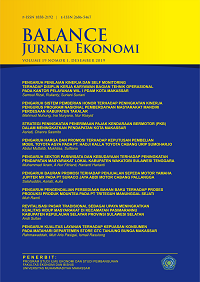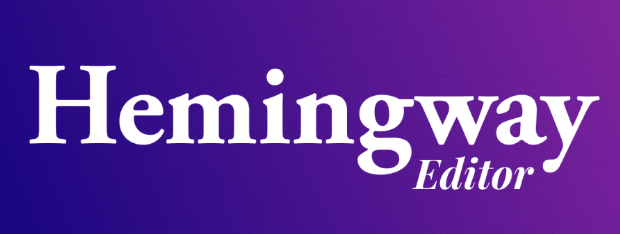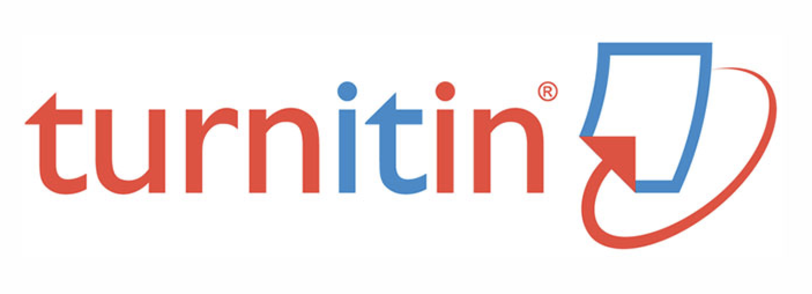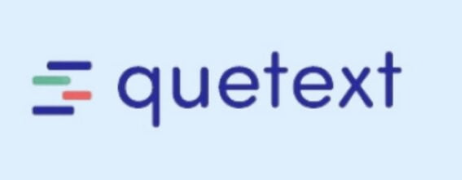The Influence of Interest Rates and Exchange Rates on Investment in Indonesia
DOI: https://doi.org/10.26618/jeb.v21i1.18608
Interest Rate, Exchange Rate, Investment, Monetary Policy, Indonesia
Abstract
This study aims to analyze the influence of interest rates and exchange rates on investment in Indonesia. A quantitative research approach was employed, utilizing secondary data in the form of time series obtained from the Central Statistics Agency (BPS) and Bank Indonesia for analysis. The data were processed using multiple linear regression analysis, complemented by classical assumption tests and hypothesis testing. Data analysis was conducted using the Statistical Package for the Social Sciences (SPSS) version 22. The findings of the study reveal that interest rates have a significant negative effect on investment in Indonesia. This indicates that rising interest rates tend to discourage investment, as the cost of capital becomes more expensive, thereby reducing incentives for both domestic and foreign investors. On the other hand, the exchange rate has a significant positive effect on investment, implying that an appreciation of the domestic currency correlates with increased investment levels. A stronger currency may reduce the cost of imported capital goods and materials, thereby supporting investment growth. These results emphasize the critical role of effective monetary policy in regulating interest rates and maintaining exchange rate stability to foster a conducive investment climate. Policymakers are advised to consider the dynamics between macroeconomic indicators and investment flows in designing sustainable economic strategies. Overall, the study contributes to a deeper understanding of macroeconomic determinants influencing investment behavior in developing economies such as Indonesia.References
Asmara, T. C., Desmintari, D., & Juliannisa, I. A. (2022). Faktor–Faktor yang Mempengaruhi Indeks Harga Saham Gabungan. Jurnal Indonesia Sosial Sains, 3(05), 822–834.
Badan Pusat Statistik Indonesia. (2024). STATISTIK INDONESIA 2024 Statistical Yearbook of Indonesia 2024. In Statistik Indonesia 2024 (Vols. 52, 2024). https://www.bps.go.id/publication/2020/04/29/e9011b3155d45d70823c141f/ statistik-indonesia-2020.html
Bakti, U., & Alie, M. S. (2018). Pengaruh Inflasi dan Suku Bunga Terhadap Investasi di Provinsi Lampung Periode 1980-2015. Jurnal Ekonomi, 20(3), 275–285.
Balaka, M. Y. (2022). Metodologi Penelitian Kuantitatif.
Bank Indonesia. (2023). Laporan kelembagaan bank indonesia TRIWULAN IV 2023.
Batubara, A. A., Aliyah, C., Harahap, A. H., & Izza, S. N. (2022). Analisis Pengaruh Kurs Dan Inflasi Terhadap Investasi Di Sumatera Utara Periode 2001-2020. Niagawan, 11(3), 274.
Bramana, S. M. (2017). Analisis Pengaruh Inflasi, Suku Bunga, dan Nilai Tukar (Kurs) Terhadap Indeks Harga Saham LQ45 yang Listing di Bursa Efek Indonesia (BEI). KOLEGIAL, 5(2), 211–224.
Destina Paningrum, S. E. (2022). Buku referensi investasi pasar modal. Lembaga Chakra Brahmana Lentera.
Dewi, Tania Melinda. Cahyono, H. (2016). Pengaruh pertumbuhan ekonomi, BI rate, dan inflasi terhadap investasi asing langsung di Indonesia. Jurnal Pendidikan Ekonomi (JUPE), 4(3).
Fyanda, D. A., Ula, M., & Asrianda, A. (2017). Implementasi Fuzzy Time Series Pada Peramalan Penjualan Tabung Gas Lpg Di Ud. Samudera Lpg Lhokseumawe. Sisfo: Jurnal Ilmiah Sistem Informasi, 1(1).
Ghozali, I. (2013). Aplikasi Analisis dengan program SPSS. Semarang: Badan Penerbit Universitas Diponegoro.
Hasanah, E. U. (2018). Pengantar Ilmu Ekonomi Makro. Hasoloan, J. (2014). Ekonomi moneter. Deepublish.
Jananuraga, G. W. (2016). Analisis Kebijakan Devaluasi Yuan dan Cadangan Devisa sebagai Faktor-Faktor Penyebab Depresiasi Nilai Tukar Rupiah terhadap Dolar Amerika Serikat pada Tahun 2015. Universitas Widyatama.
Jessica, J., Michelle, M., & Lilia, W. (2021). Pengaruh Tingkat Suku Bunga, Nilai Tukar, Inflasi dan Return on Assets (ROA) terhadap Harga Saham pada Sub- Sektor Perbankan Di Bursa Efek Indonesia Tahun 2016-2019. Jurnal Ilmiah Universitas Batanghari Jambi, 21(1), 317–326.
Jufrida, F., Syechalad, M. N., & Nasir, M. (2016). Analisis pengaruh investasi asing langsung (FDI) dan investasi dalam negeri terhadap pertumbuhan ekonomi Indonesia. Jurnal Perspektif Ekonomi Darussalam (Darussalam Journal of Economic Perspec, 2(1), 54–68.
Juliannisa, I. A. (2020). Pengaruh kurs terhadap investasi di Indonesia tahun 1987- 2018. Bisman-Jurnal Bisnis & Manajemen, 5(01), 120–124.
Kustina, L., Anwar, S., & Kaniawati, F. (2018). Investasi Asing: Pertumbuhan Ekonomi dan BI Rate: Foreign Investment: Economic Growth and BI Rate. Jurnal Investasi, 4(2), 14.
Marsuni, N. S. (2024). The Challenges of the Sharia Economy and Businesses In Facing the Coronavirus Endemic and Circular Economy In Indonesia. LAA MAISYIR: Jurnal Ekonomi Islam, 275-291.
Mahendra, A. (2016). Analisis pengaruh jumlah uang beredar, suku bunga sbi dan nilai tukar terhadap inflasi di Indonesia. Jurnal Riset Akuntansi & Keuangan, 1–12.
Manan, S. A., & Aisyah, S. (2023). Pengaruh Produk Domestik Bruto, Tingkat Suku Bunga, Inflasi, dan Pertumbuhan Ekonomi terhadap Foreign Direct Investment di Asean. Ekonomis: Journal of Economics and Business, 7(1), 159–163.
Marsuni, N. S., & Rismawati, R. (2018). Analysis of Income and Costs of Business Activity Development at the Business Development Center (P2B) of Makassar State Islamic University. Jurnal Ekonomi Balance, 14(1), 129-136.
Mildyanti, R., & Triani, M. (2019). Analisis Faktor-Faktor Yang Mempengaruhi Cadangan Devisa (Studi Kasus Di Indonesia Dan China). Jurnal Kajian Ekonomi Dan Pembangunan, 1(1), 165–176.
Muchlas, Z., & Alamsyah, A. R. (2015). Faktor-faktor yang mempengaruhi kurs rupiah terhadap dolar amerika pasca krisis (2000-2010). Jurnal Jibeka, 9(1), 76–86.
Nainggolan, P. A. (2019). Analisis Pengaruh Jumlah Uang Beredar, Suku Bunga dan Nilai Tukar Terhadap Inflasi di Indonesia Tahun 2003-2017.
Nujum, S., & Rahman, Z. (2019). Pengaruh investasi dan inflasi terhadap pertumbuhan ekonomi di kota makassar. Jurnal Economic Resource, 2(1), 21–33.
Prasasti, K. B., & Slamet, E. J. (2020). Pengaruh Jumlah Uang Beredar Terhadap Inflasi Dan Suku Bunga, Serta Terhadap Investasi Dan Pertumbuhan Ekonomi Di Indonesia. Jurnal Ekonomi Dan Bisnis Airlangga, 30(1).
Priyono, & Candra, T. (2016). Esensi Ekonomi Makro. In Journal of Chemical Information and Modeling (Issue March). https://doi.org/10.13140/RG.2.1.4271.0166
Priyono dan Zainuddin Ismail. (2017). Teori Ekonomi.
Raharjo, S. (2010). Pengaruh inflasi, nilai kurs rupiah, dan tingkat suku bunga terhadap harga saham di bursa efek indonesia. ProBank, 1(3), 161972.
Rokhim, M. (2014). Analisis Pengaruh Tingkat Inflasi, Nilai Kurs, Suku Bunga Terhadap Indeks Harga Saham Gabungan (IHSG) Pada Masa Stimulus Amerika Serikat Quantitatife Easing (QE) Tahun 2008-2014. Jurusan S1 Akuntansi Fakultas Ekonomi Universitas Negeri Surabaya.
Sarah, S., & Nuraeni, N. (2016). PENGARUH TINGKAT SUKU BUNGA BANK INDONESIA DAN NILAI TUKAR MATA UANG TERHADAP INDEKS SAHAM SYARIAH INDONESIA PERIODE 2011–2015. Jurnal Indonesia Membangun, 15(1), 1–13.
Sari, G. A. A. R. M., & Baskara, I. G. K. (2018). Pengaruh pertumbuhan ekonomi, suku bunga, dan nilai tukar terhadap investasi asing langsung di indonesia. Udayana University.
Sartika, U. D., & Choiriyah, C. (2019). Pengaruh Inflasi, Suku Bunga, Nilai Tukar, Dan Produk Domestik Bruto Terhadap Nilai Perusahaan. Jurnal Ilmu Manajemen, 8(2), 75–89.
Sitorus, D. (2020). ANALISIS PENGARUH NILAI TUKAR, PRODUK DOMESTIK BRUTO, INFLASI, DAN SUKU BUNGA TERHADAP PENANAMAN MODAL DALAM NEGERI (PMDN) DI INDONESIA PERIODE 2000-2018.
Siwi, J. A., Rumate, V. A., & Niode, A. O. (2019). Analisis pengaruh tingkat suku bunga terhadap permintaan kredit pada Bank Umum di Indonesia tahun 2011- 2017. Jurnal Berkala Ilmiah Efisiensi, 19(01).
Umam, K., & Sutanto, H. (2013). Pasar Modal Syariah. Bandung: Pustaka Setia.












